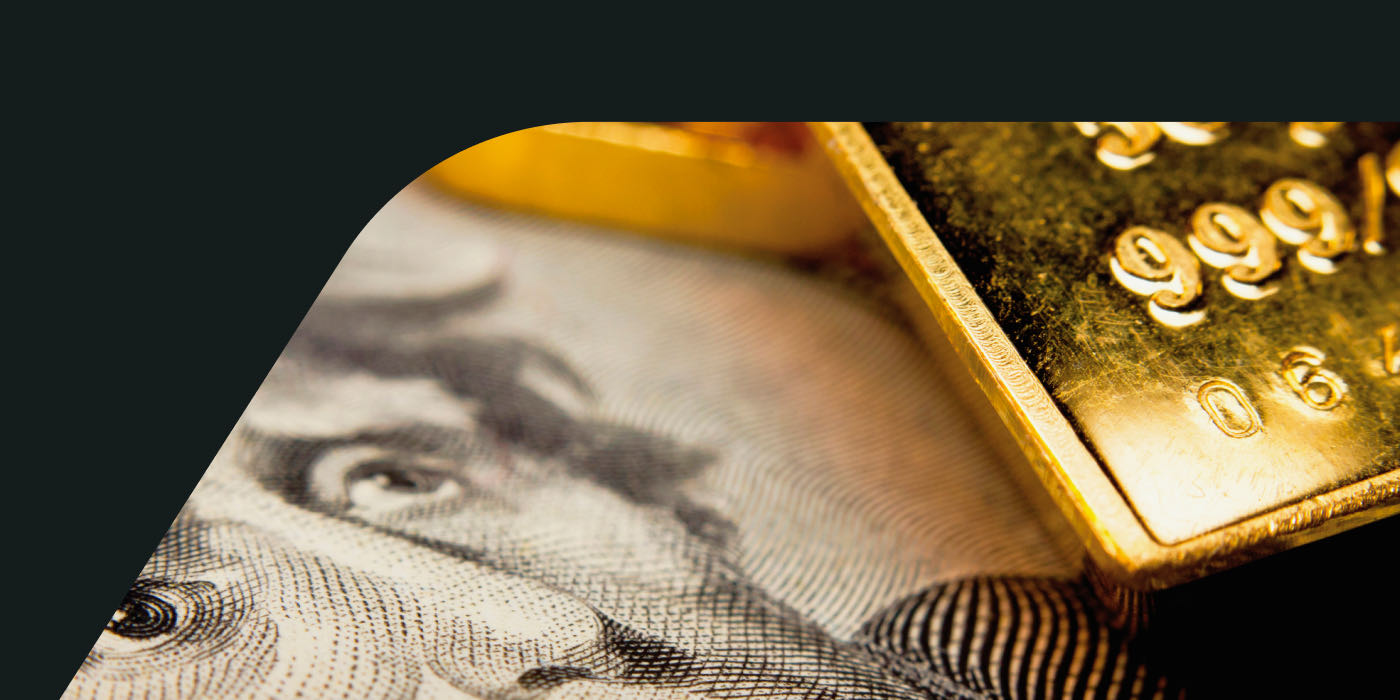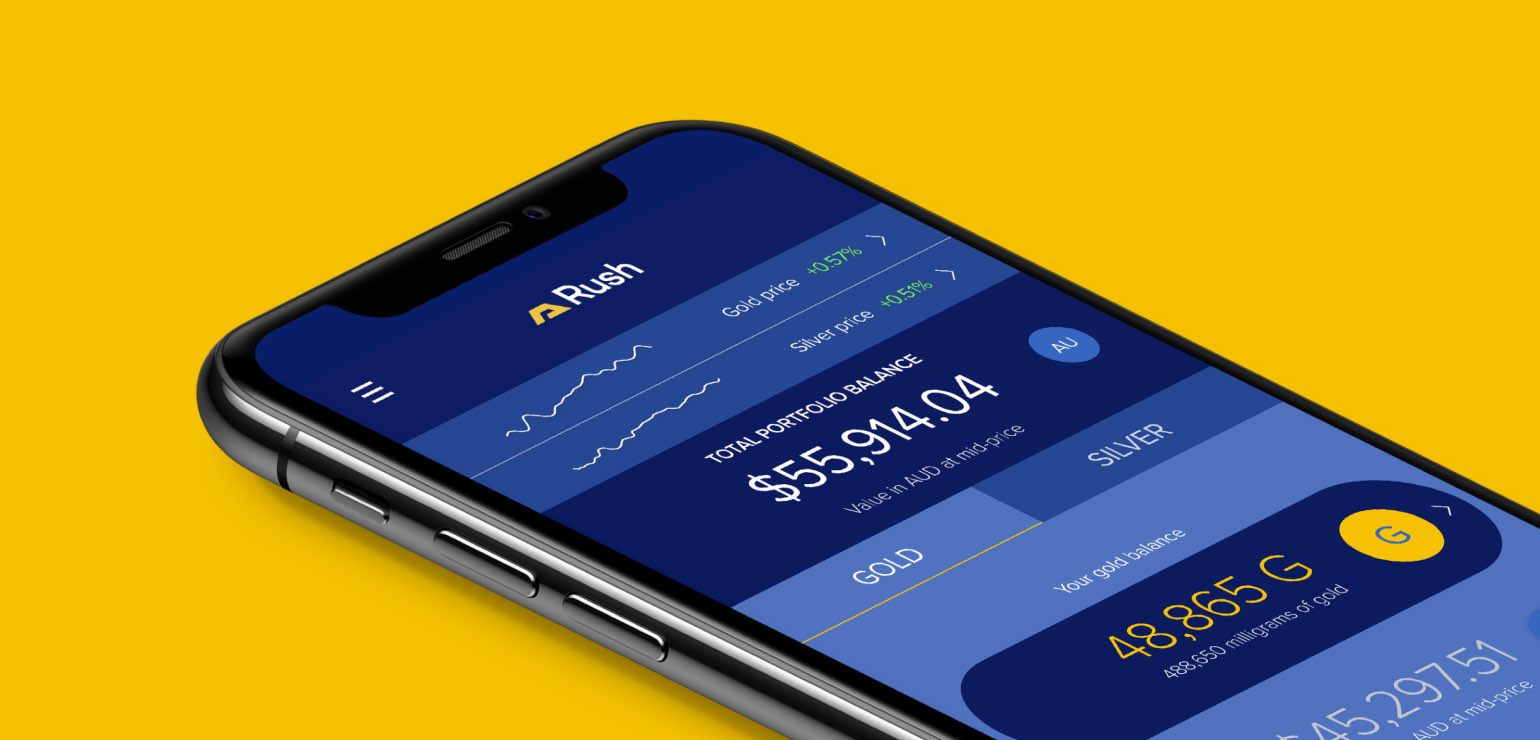The global discussion around rising interest rates is sometimes associated with challenges for the price of gold. But other factors are currently in play that make it a very attractive non-risk asset to accumulate today.
Central banks have been consistently cutting interest rates for nearly 40 years to manage whatever crisis appeared in the global financial markets. We now have a situation where zero, negative and extremely low interest rates have distorted global finance. In that environment, investors streamed into riskier investments, inflated stock prices and real estate.
Last year felt like an upside down one for gold. The biggest rise in inflation in 40 years was recorded in 2021. Inflation in Australia climbed from 0.9 per cent in 2020 to 3.5 per cent in the December 2021 quarter. In the US, the experience was more dramatic. From a low of 1.2 per cent in 2020 it increased to 4.3 per cent a year later and now hovers around 6.8 per cent.
Gold Performance 2021
While the gold price dipped between -1 per cent to -5 per cent in developed markets like the US and Europe, in some emerging markets there was a stark difference in results.
The 85 million people in Turkey, for example, saw their gold appreciate by 61.1 per cent. 54 million Myanmar residents saw their gold rise by 30.5 per cent. In Colombia gold returned 8.9 per cent, roughly double the interest rate paid on bank deposits.
Time to Increase Gold to Protect Portfolio Capital?
As inflation surges, gold investors will be closely watching how regulators try to nudge interest rates higher to tame the situation.
Historically a rise in rates has been viewed as a negative for the gold price (a view that we challenge based on the actual data). According to this view, as bonds pay higher and higher interest gold has a more difficult time being competitive because true gold ownership comes with holding costs.
But this argument also contains an embedded logic bomb: the conditions that would cause the flow of money from gold to bonds also represent a threat to the very value of those bonds.
The move out of one capital preservation asset (gold) into another capital preservation asset (bonds) would be driven by conditions (higher interest rates) that over time cause those bonds to lose their ability to preserve capital in the first place. As interest rates rise, money would flee from low interest bonds to higher ones, reducing the value of the low interest ones.
Warning: Undefined array key "content_1_b" in /home4/sqzstage/public_html/rush/wp-content/themes/rush/gold-outlook-2022/functions.php on line 206
Prior to 1981, bond prices fell as interest rates rose.
Since 1981, however, central banks have been consistently cutting interest rates to manage whatever crisis appeared in the global financial markets.
If inflation now forces them to raise rates, bonds will flip back from being capital growth assets to being capital destruction assets, just as they were prior to 1981.
If interest rates rise, the traditional 60/40 balanced portfolio may struggle
Today the historical one, three, five, ten, 20, and 30 year returns from these balanced portfolios look excellent. But as with any investment, a look in the rear-view mirror is only an interesting data point. Investment advisors are required by law to remind us of this. Hence the often quoted warning that past performance is not indicative of future results.
Oxford Economics have demonstrated* that a 10-15 per cent gold allocation to the typical 60/40 balanced portfolio reduces the overall risk of the portfolio while increasing returns.
But given the fact that the bond portion may not perform as well as it recently has (per the above), there is a strong argument that this gold allocation can be increased even further at this stage in order to protect portfolio capital.
High Debt Levels Could Moderate Rate Rises
The latest market talk maintains that interest rates will rise to more “normal” levels as economies recover and central banks like the US Federal Reserve reduce the number of bonds they have been buying in order to keep interest rates artificially low.
But a “return to normalcy” is easier said than done. Regulators may struggle this time around to raise rates because worldwide debt levels are already so high.
payments on debt
For example, let’s say that interest rates increase by just two per cent on current levels. In that scenario, US Government interest payments on debt would more than double from $US350 billion today to $US 750 billion.
In other words, three quarters of a trillion dollars would be required each year after a two per cent rate rise just to keep the lights on. This reality could keep any rate rises on the modest side.
Flatter Gold Prices May Be Signalling Deflation Ahead
There is an old expression that is worth considering: “Gold tells the truth”. Gold has a tendency to rise prior to inflation arriving on the scene and to moderate once it does.
We saw healthy rises in the gold price in 2019 and 2020 (18.3 per cent in 2019 and 24.6 per cent in 2020). But in 2021 flatter gold prices began signalling deflation ahead.
This is logical, as the full long-term economic effects of the lockdowns begin to be felt across the globe and the lockdown related stimulus programs expire.
One factor that may moderate inflation is the so-called “velocity” of money (how quickly money moves around)
It is difficult for there to be sustained inflation when money is changing hands more slowly than ever.
Do Governments Want High Inflation?
Another question regarding inflation has implications for the interest rate outlook, which means it also has implications for bond, stock and gold prices. Does The US Federal Reserve (The Fed) actually want inflation?
The answer would seem to be that not only do they want it, they must have some in order to reduce debt levels to manageable levels. This implies that while they want to appear to be “normalising” their activities after a long period of extreme and unprecedented interventions. That “normalisation” (i.e. interest rate rises) will not be significant enough to prevent some inflation from working its way through the system, thus reducing debt levels.
No Breaks on Fed’s Money Printing
The Federal Reserve has used many different methods to obscure how they are printing money. They use arcane terms like “quantitative easing” and opaque acronyms for programs such as TARP, TALF and LSAP etc.
They use these obscure terms and acronyms, otherwise they would have to admit officially that they are “monetising the debt”. In other words, doing what The Fed has consistently warned so-called “banana republic” countries about doing for years.
To restate: it has always been considered a reckless practice for a government to run up huge quantities of debt which they then pay for by printing lots and lots of the country’s currency.
The Fed knows it is in the perceptions business. Their plan is to reduce some of the acronym programs in order to generate news headlines emphasising that the Fed is not monetising debt any more.
But actually while Peter may be getting much less, Paul will be getting more than ever. The reduction amounts planned by The Fed in the official programs are dwarfed by the $US 1.7 trillion in monetisation that has migrated to the so called “overnight” markets.
$US 1.7 trillion in US Treasuries printed by the US Government now gets recycled into the banking system in these markets each and every day, up from less than $US 100 billion just 18 months ago.
The supply of gold will rise +/- 1.7 per cent this year. Does it matter if the supply of US dollars rises 20 per cent through the front door, the side door, or the back door under the cover of night (per the above)? No. Expect more and more dollars to be chasing roughly the same amount of gold in the world.
Gold Pressures on Fiat Currencies
In our 2020 Outlook* we discussed how banks were defending their currencies against the rise of one of their main competitors: gold. They attempted to maintain the $US 1200 price level.
Then they tried without success to defend the $US 1500 price level.
In recent months, banks attempted to defend the $US 1800 level.
Based on recent (and ancient) history it’s difficult to conclude that they will succeed this time around when each of their previous “lines in the sand” for the price of gold has eventually failed.
Technical analysts are noting that each decline to the $1800 region is at a slightly higher level, a positive sign.
More Debt No Longer a Solution
However, a more interesting “defending the fiat currency” theme for gold is macro-economic. Alternatives to the fiat system (like crypto currencies) are attracting peoples’ imaginations and capital ($US 1.9 trillion of it at last count).
The defenders of the fiat banking system, from the US Federal Reserve to the European Central Bank to the IMF and The World Bank, may eventually have two choices.
One, instil renewed confidence in the soundness of their fiat banking system. Or two, abdicate the control of money to software developers, who say they have created sustainable, decentralised sound money using distributed ledger (blockchain) software.
We don’t think that the governments and banking regulators will give up without a fight and surrender their national and international currency sovereignty to software developers. While nations could follow China’s example – its central bank banned crypto currencies in 2019 – attempting to outlaw any crypto currency is probably much too extreme for them to contemplate.
So should the West choose to defend their money franchise – we think they will – they really only have one weapon in their “soundness” arsenal: the gold they all own.
Using gold, the US could add $US 2 trillion to the money supply overnight without adding a single dollar more in US debt. The Fed would instruct the US Department of the Treasury to offer to buy gold at $US 10,000 an ounce. The mechanisms and legal authority to do this are already in place.
Repricing the 8,300 tons of US gold in Fort Knox and elsewhere would instantly improve US finances by an order of magnitude. It would recapitalise the dollar-based fiat banking world, putting it back on a much more sound footing.
That course, however, may still take some time to play out. There is a quote ascribed to Winston Churchill that says: “You can always count on Americans to do the right thing…after all other alternatives have been exhausted”. But it does feel as though we are inching ever closer to that exhaustion point, when finally solving the “too much debt problem” cannot be delayed any longer with more debt.
As one very experienced economist and well-connected Fed observer said recently:
“It could be that gold may not appear to be doing very much for you, until it does everything for you.”
So we are happy to summarise our 2022 Outlook the same way as we did for our 2020 Outlook, with a single word: Accumulate.
Rush Gold is the premier place to do that.
All dollars are USD

